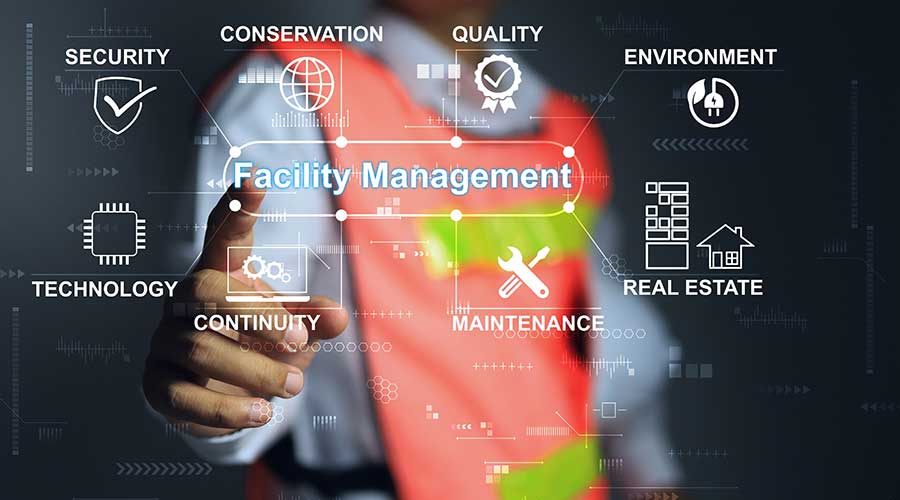In the shift toward integrating value-based payment models within public healthcare programs, facility management can play a key role in influencing the quality metrics that are tied to reimbursements. When revenues are on the line, basing facility management operations on leading practices aligned with the business strategy will help achieve higher metrics for quality.
Leading facility management practices can have a dramatic impact on patient satisfaction and the bottom line. For example, facility managers might uncover ways to save $1 million in facilities operating expenses and generate an additional $33 million in revenue with proper implementation of new practices. These savings can go toward recruiting caregivers, updating facilities and supporting patient outcomes.
High-performance facility management begins with understanding current facility management practices and identifying opportunities to boost outcomes. Through strategic improvements, the facilities team can reduce costs, mitigate risk and boost quality metrics across acute care, non-acute care and ambulatory service facilities.
To improve their quality metrics, managers can explore three critical questions with their teams.
Are team skills kept up to date?
Are facility professionals trained in leading practices from ASHE or other sources? Just as healthcare professionals must undergo continuing medical education, technicians taking part in training can keep pace with modern technologies and approaches, and they can adopt systemwide service-delivery practices that ensure a consistent brand experience.
Upskilling staff not only can support patient outcomes. It also can reduce healthcare facility management costs by 12-18 percent.
Upskilling is especially important when it comes to preventive maintenance strategies. Preventive, or reliability-focused, maintenance can reduce unplanned equipment failures by 17 percent, reducing energy and maintenance costs by up to 30 percent.
Unlike calendar-based maintenance, reliability-centered maintenance involves using sophisticated technologies to monitor refrigerators, imaging machines and other equipment so the facilities team can prevent costly emergency repairs and replacements.
Are facilities always inspection-ready?
If The Joint Commission were to inspect an organization’s facilities today, would they all comply with the appropriate standards? Facilities’ regulatory compliance and accreditation are critical for shaping patient care, quality metrics and a hospital’s brand reputation. But compliance training and readiness are not always ongoing.
In fact, compliance and accreditation preparation typically is a periodic activity rather than a built-in practice. When an inspection date approaches, the facilities team typically focuses on remediating items most likely to receive attention while juggling daily service requests and tracking down compliance records.
Many daily practices can support compliance readiness. For instance, the facilities team can help prevent hospital-acquired infections through performing weekly checks of critical systems, uncovering sources of mold and bacteria growth, and keeping room furnishings clean. Another leading practice is to maintain a centralized repository of compliance data that teams can quickly access in response to regulatory inquiries.
Ideally, the facilities team makes regular rounds of key equipment and facility areas and maintains a current digital record of compliance-related checks. With the right tools and training, preparing for inspection authorities can become part of the daily facilities routine.
Does the team leverage data and technology?
Does the facilities team make the most of today’s technologies to reduce costs, streamline workflows and make data-driven decisions? The most efficient facilities teams leverage automation and data to reduce costs, expedite work-order management, maintain compliance readiness and expand facilities management capacity without having to recruit scarce talent.
Data for benchmarking and generating metrics can come from numerous sources, including the general ledger, an integrated workplace management system and industry surveys. For instance, analyzing such performance metrics as revenue per facility and facilities employee ratios can help identify sites with above- or below-average operational costs and identify solutions.
With access to facilities data, managers can see whether they are operating with the optimal staffing level of one facilities employee per 45,000 square feet of space or below the healthcare industry average for facility operating costs of $7.50 per square foot. They can determine whether their organization’s cost per square foot for water, electrical power, gas and sewage disposal are on par with national healthcare industry benchmarks.
Building engineers can use the data generated by preventive maintenance technologies to extend equipment life while avoiding critical equipment failures that disrupt patient care. Facilities teams also can use data from facility condition assessments and work-order systems to understand which facilities and systems use above-average amounts of energy and to reduce carbon emissions. Facilities teams also can use building equipment data to create data-driven, objective capital plans that stakeholders endorse.
Armed with training and leading approaches, facility managers not only can keep facilities safe, clean and reliable. They also can help create a high-quality patient experience that leads to strong quality metrics. High-performance facilities management supports the entire organization and can create opportunities to save millions of dollars annually, improve life safety and create the consistent experience that patients value.
Amy Nunziata is executive vice president of healthcare work dynamics with JLL.

 UF Health Hospitals Rely on Green Globes to Realize Their Full Potential
UF Health Hospitals Rely on Green Globes to Realize Their Full Potential How Healthcare Facilities Can Be Truly Disaster-Resilient
How Healthcare Facilities Can Be Truly Disaster-Resilient TriasMD Breaks Ground on DISC Surgery Center for San Fernando Valley
TriasMD Breaks Ground on DISC Surgery Center for San Fernando Valley Bigfork Valley Hospital Falls Victim to Data Breach
Bigfork Valley Hospital Falls Victim to Data Breach AI-Driven Facilities: Strategic Planning and Cost Management
AI-Driven Facilities: Strategic Planning and Cost Management